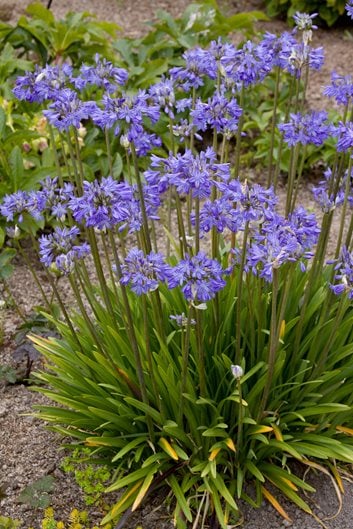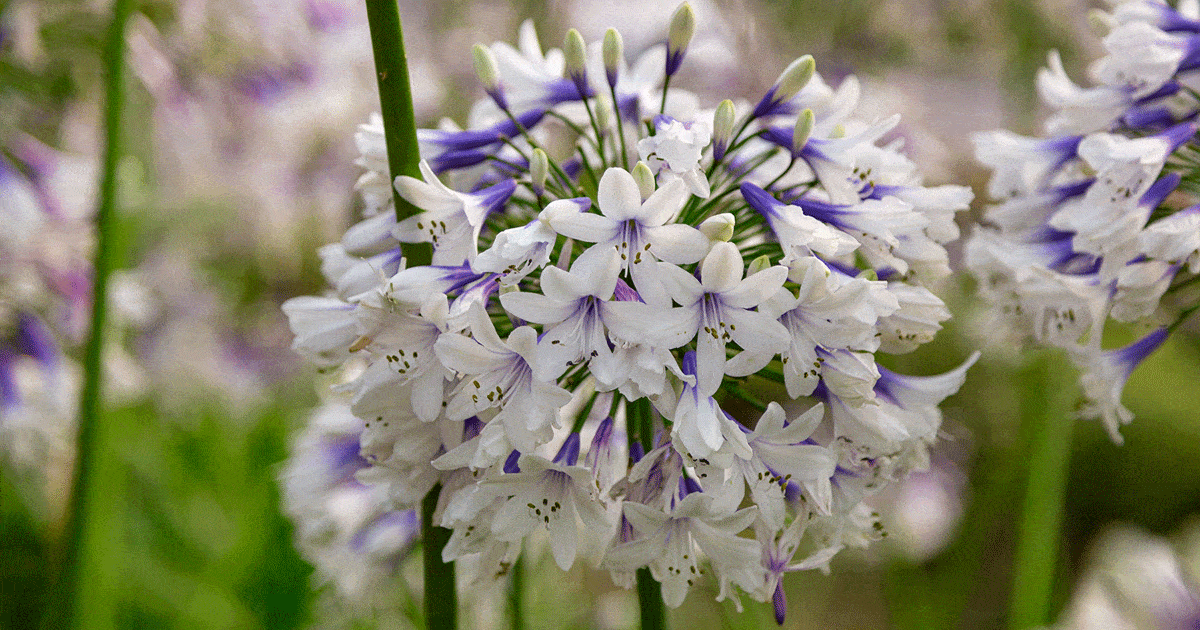Typical Agapanthus Problems and Exactly How to Address Them
Typical Agapanthus Problems and Exactly How to Address Them
Blog Article
Mastering the Art of Agapanthus Treatment: Important Actions for Healthy Growth and Vivid Blossoms
In the realm of cultivation, the farming of agapanthus stands as a fulfilling undertaking for those that seek to nurture these stylish flowering plants. With their striking flowers and graceful foliage, agapanthus has captured the attention of gardeners worldwide. However, attaining optimum growth and vivid blossoms needs a nuanced method that includes different vital actions. From picking the ideal range to understanding trimming methods, the journey in the direction of cultivating thriving agapanthus plants is complex and holds the vital to opening the full possibility of these organic gems.

Picking the Right Agapanthus Variety

When picking the appropriate Agapanthus variety for your garden, consider variables such as climate suitability, bloom shade, and growth behavior. Agapanthus, commonly known as Lily of the Nile or African lily, is available in a selection of colors varying from tones of purple and blue to white. Select a blossom shade that complements your existing garden combination to create a harmonious landscape. Additionally, take into consideration the climate in your area to guarantee the Agapanthus variety you pick can flourish in your specific problems. Some varieties are more tolerant of chilly temperatures, while others prefer warmer environments. Recognizing the development practice of different Agapanthus ranges is crucial for correct positioning within your yard. Some ranges have a clumping development routine, suitable for containers or boundaries, while others have a more spreading nature, ideal for ground cover or mass growings. By thoroughly evaluating these variables, you can select the perfect Agapanthus selection to improve the charm of your yard.
Suitable Planting Problems
Considering the optimal environmental requirements is essential for effective Agapanthus growing. Agapanthus prospers in well-draining dirt with a slightly acidic to neutral pH degree. When planting, choose a place that gets complete sunshine to partial shade. In hotter environments, supplying some mid-day color can avoid scorching of the fallen leaves. Agapanthus plants are delicate to cold temperatures and ought to be shielded from frost throughout cold weather.
To make certain healthy growth and vivid flowers, plant Agapanthus bulbs at a depth of concerning 2-4 inches and room them 8-12 inches apart. Mulching around the base of the plants assists preserve wetness and suppresses weed development.
Watering and Fertilizing Tips
Keeping appropriate moisture degrees and giving important nutrients are crucial components in the care program for Agapanthus plants. It is critical to strike a balance when it comes to sprinkling Agapanthus. These plants favor regularly wet dirt however are susceptible to root rot if overwatered. Throughout the expanding period, water deeply as soon as a week, making sure the dirt is well-draining to stop waterlogging. In hotter environments or during durations of dry spell, even more frequent watering might be essential to keep the soil uniformly her comment is here damp. However, decrease watering in the winter months to stop waterlogged conditions.
Feeding Agapanthus is crucial for promoting healthy and balanced growth and prolific blooms. Apply a well balanced plant food, such as a 10-10-10 formula, in the early spring as brand-new development arises. By adhering to these watering and feeding suggestions, have a peek at this site you can ensure your Agapanthus plants thrive and create vivid, durable flowers.
Pruning Strategies for Agapanthus
Trimming Agapanthus plants at the proper times and with correct techniques is crucial for maintaining their health and promoting ideal growth and blooming. The perfect time to prune Agapanthus is in late wintertime or very early springtime prior to new development arises.
For flowered stems, wait till the blooms have actually perished and after that cut them back to the base. This not just cleans the plant's look however additionally encourages the development of new flower buds. Deadheading invested flowers can also redirect the plant's power into creating more blossoms instead of setting seeds. Nonetheless, if you intend to collect seeds for proliferation, leave some flowers to completely dry and fully grown on the plant.
Bear in mind to utilize clean, sharp devices to make exact cuts and minimize the threat of presenting conditions. Agapanthus. Regular trimming will certainly help maintain your Agapanthus looking neat and healthy and balanced while ensuring a bountiful display screen of stunning blossoms
Handling Typical Insects and Conditions
After making sure proper pruning methods for Agapanthus, it is important to attend to usual pests and diseases that can affect the health and wellness and vitality of these plants. Agapanthus plants are usually durable yet can still fall sufferer to certain problems. try this One typical bug that affects Agapanthus is the Agapanthus gall midge. This small, orange fly lays its eggs in the foliage, causing altered development and flower buds that stop working to open. To fight this insect, trim and ruin any kind of affected plant components and think about making use of insecticidal soap.
Another typical concern is fungal fallen leave area, which provides as dark lesions on the leaves. To avoid fungal illness, ensure good air circulation around the plants, stay clear of above watering, and remove any contaminated fallen leaves without delay. In addition, Agapanthus plants can experience origin rot if they are grown in improperly draining dirt. To avoid this, plant Agapanthus in well-draining dirt and avoid overwatering. By being cautious and taking punctual activity versus diseases and parasites, you can assist your Agapanthus plants grow and generate vibrant flowers.

Conclusion
Finally, understanding the art of agapanthus care entails choosing the best range, supplying suitable growing problems, appropriate watering and fertilizing, proper pruning techniques, and resolving usual parasites and diseases. By following these necessary steps, you can ensure healthy and balanced growth and vivid blooms for your agapanthus plants. Bear in mind to on a regular basis monitor and keep your plants to advertise their overall health and durability.
To guarantee healthy and balanced growth and dynamic flowers, plant Agapanthus light bulbs at a depth of regarding 2-4 inches and room them 8-12 inches apart. By complying with these watering and fertilizing pointers, you can guarantee your Agapanthus plants flourish and produce lively, lasting flowers.
One usual bug that influences Agapanthus is the Agapanthus gall midge. Furthermore, Agapanthus plants can suffer from origin rot if they are planted in inadequately draining pipes soil. By adhering to these crucial steps, you can ensure healthy and balanced growth and dynamic flowers for your agapanthus plants.
Report this page